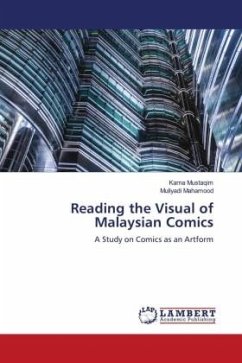People are witnessing living in a convergence culture, with meetings between old and new media creating new possibilities in contemporary culture. One of the cultures that has emerged since the late nineteenth century is comics. The amusement of comics seems to invite more people - young or adults - to be immersed into the world of comics. Understanding the art of comics can help public awareness go beyond the initial appreciation of the drawings and the stories it contains. It would be agreeable that cartoons are an invaluable reflection of society. This study focuses on four limited established and eligible comics' magazines from 2006 till 2008, such as Gila Gila, Ujang, Gempak, and G3, which consider to study its visual subject matter and form. Followed by categorization through the analysis of visual form based on the formal structure and its visual semiotics analysis. Indeed, it is meaningful to understand how comics invite readers into the world in which, they are experiencing the first-person pre-reflectively moments.
Bitte wählen Sie Ihr Anliegen aus.
Rechnungen
Retourenschein anfordern
Bestellstatus
Storno








